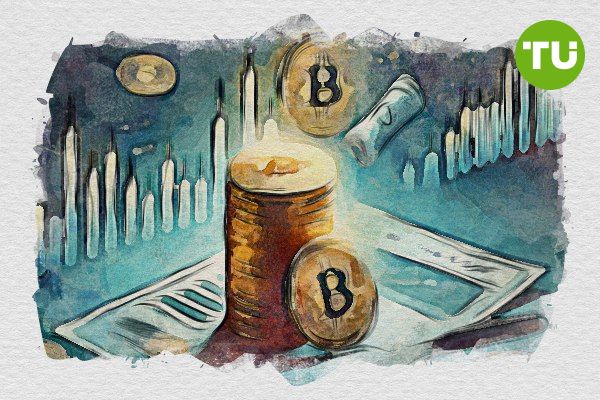Paper Bitcoin: The illusion of ownership
 Paper Bitcoin — a form of Bitcoin that exists only as a promise
Paper Bitcoin — a form of Bitcoin that exists only as a promise
For many investors, Bitcoin represents financial sovereignty, a hedge against inflation, and a way to opt out of traditional banking systems. However, there is a growing concern in the crypto space about something called Paper Bitcoin — a form of Bitcoin that exists only as a promise, rather than as a real, on-chain asset. While it may sound harmless, Paper Bitcoin could pose a serious risk to the very foundation of decentralized finance.
What is Paper Bitcoin?
Paper Bitcoin refers to Bitcoin that is not physically (digitally) owned by an investor but instead exists as a claim, IOU, or financial derivative issued by a third party. The Paper Bitcoins is commonly found in centralized exchanges, futures contracts, and certain investment products like ETFs.
To understand this better, imagine you buy Bitcoin through an exchange, but instead of transferring it to your personal wallet, you leave it in your exchange account. Technically, you see a balance labeled “BTC,” but what you actually own is a promise from the exchange that they have Bitcoin for you. If the exchange fails, mismanages its reserves, or engages in fractional reserve practices, you might never be able to withdraw your actual BTC.
Loading...
The problem with Paper Bitcoin
Paper Bitcoin creates an illusion of supply. When exchanges or institutions issue more Bitcoin IOUs than they actually hold, they artificially increase the perceived supply of Bitcoin, which can suppress its price. This is similar to how banks lend out more money than they physically hold in their vaults— a practice known as fractional reserve banking.
The danger arises when too many people try to redeem their Bitcoin at the same time. If exchanges have over-leveraged their reserves, it can lead to a liquidity crisis, bankruptcies, or exchange collapses—events we have already seen in the crypto world.
A notable case of Paper Bitcoin failure was the FTX collapse in 2022, one of the biggest scandals in crypto history. FTX had billions in customer funds but not enough real Bitcoin or cash reserves to honor withdrawals. When users rushed to withdraw their funds, the entire system collapsed, leaving investors empty-handed.
The difference between real Bitcoin and Paper Bitcoin
Real Bitcoin is stored in a personal wallet, where the owner controls the private keys. This means that the holder has full authority over their Bitcoin and can transact without needing approval from a third party. On the other hand, Paper Bitcoin exists only as a claim held by an exchange or financial institution, meaning the investor does not have direct ownership.
When it comes to security, real Bitcoin is significantly safer if stored correctly, as it cannot be seized or lost due to exchange failures. In contrast, Paper Bitcoin is subject to risks such as exchange bankruptcy, fund freezes, or even fraud.
Another major difference is transparency. Real Bitcoin transactions are recorded on the blockchain and can be verified at any time, whereas Paper Bitcoin reserves are often opaque, making it difficult to confirm whether the issuing entity actually holds the assets it claims.
Overall, real Bitcoin offers true financial sovereignty, while Paper Bitcoin relies on trust in third-party institutions, which has historically led to significant losses in the crypto world.
Loading...
Own Bitcoin, don’t just see it
The rise of Paper Bitcoin is a hidden risk that could have long-term consequences for the cryptocurrency market. Investors need to be aware that not all Bitcoin they see on screens is real. As the old saying in the crypto world goes: “Not your keys, not your coins.” The safest way to protect your Bitcoin investment is to take control of it yourself. In a digital world filled with illusions of ownership, true sovereignty comes from holding your own keys.













































































































































